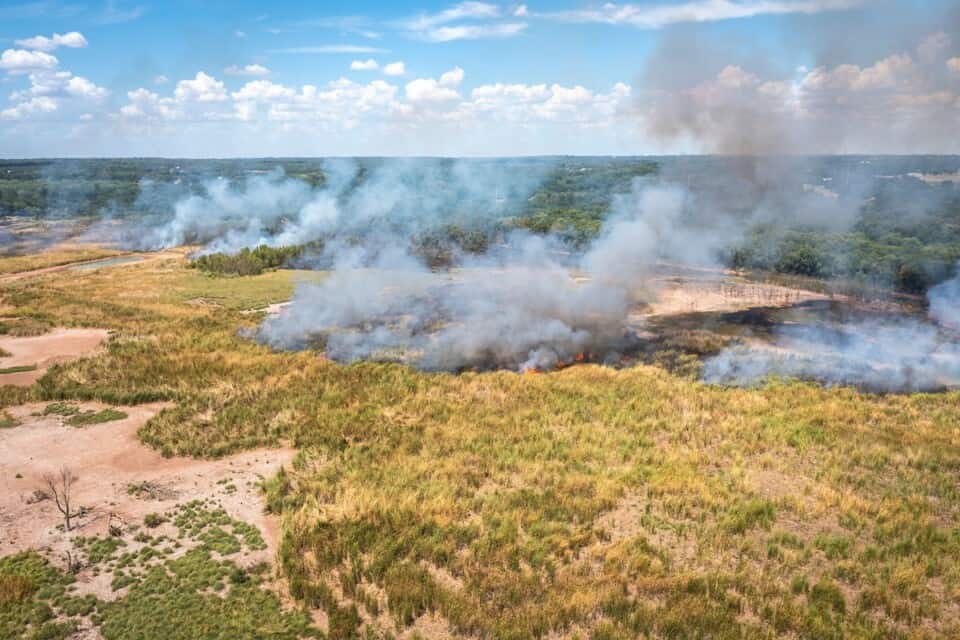The Smokehouse Creek fire, which ignited on February 26 near Stinnett in the Texas Panhandle, has scorched over 1 million acres. Fanned by strong winds, it was among several major fires in the area, tragically claiming lives and causing extensive damage to hundreds of buildings. These fires deeply impact ranchers statewide, highlighting the unpredictable nature of life on the land despite our best preparations. Our thoughts and prayers are with all of those affected. We are grateful to the Dallas Morning News for engaging us in a conversation about wildfire preparedness and strategies that help when conditions aren’t so extreme.
Original Article posted by the Dallas Morning News

Ranch broker discusses strategies for protecting property from wildfire
Here are three common practices to help mitigate the spread of fire on ranchland.
As Texas works to combat wildfires burning across the state’s Panhandle, here’s a look at three methods to curb, mitigate and even prevent the spread of fire on properties of all sizes.
There are certain conditions that preparedness can’t overcome. With the Smokehouse Creek fire, high-speed winds coupled with dry weather created an insurmountable environment for even the most prepared properties.
But Blake Hortenstine, a partner/broker at Hortenstine Ranch Co., shared three fire preparedness strategies that can work in less extreme circumstances. While these practices are commonplace among most ranch owners, they serve a vital purpose if any property is faced with a potential issue.
Vegetation Control
The primary prevention tool is vegetation control.
“If you let a property go and it’s overgrown, it’s a whole lot harder when you do get a fire. It will carry much faster and be harder to control,” Hortenstine said.
Vegetation control includes clearing underbrush, trimming limbs and mowing.
Firebreaks
Firebreaks are the next most commonly used prevention technique, essentially providing a large amount of surface area, both naturally occurring and man-made, that a fire must jump in order to spread.
Streams, creeks and rivers act as natural breaks, while infrastructure, such as roads and highways are as much firebreaks as they are thoroughfares.
Within the property lines of a ranch, fire guards are often built into fence lines. The process involves using a motorized grader or other tool to scrape away brush and smooth roads to leave a strip of raw minerals or dirt.
“If you do have a fire come across, [a fireguard] can potentially stop it,” Hortenstine said. “If you have a big fire and the conditions are right, it will jump the road and the fire guard real easy, but sometimes that can prevent a fire before it gets out of hand.”
Some properties have second fire guards in place, typically spaced as much as 100 feet away from the first with minimal to no vegetation in between. That can be considered extreme, but it also creates that much wider of a firebreak.
Water
Water is also important. Hortenstine, for instance, has a water tank on a trailer with a sprayer that can be pulled behind a utility task vehicle. Other properties use old fire trucks, while some larger properties have irrigation systems that can be used as well.
By Anna Butler

